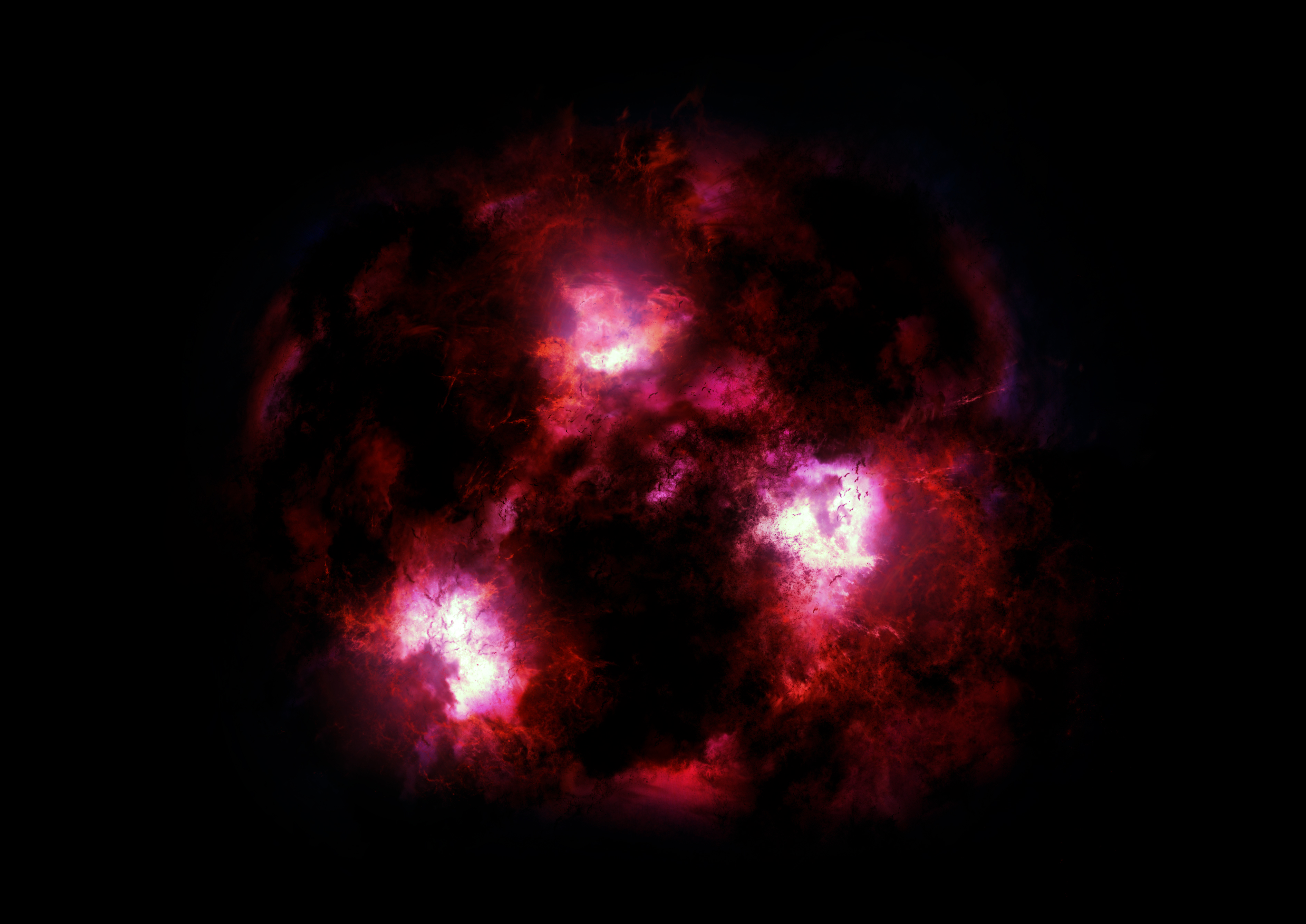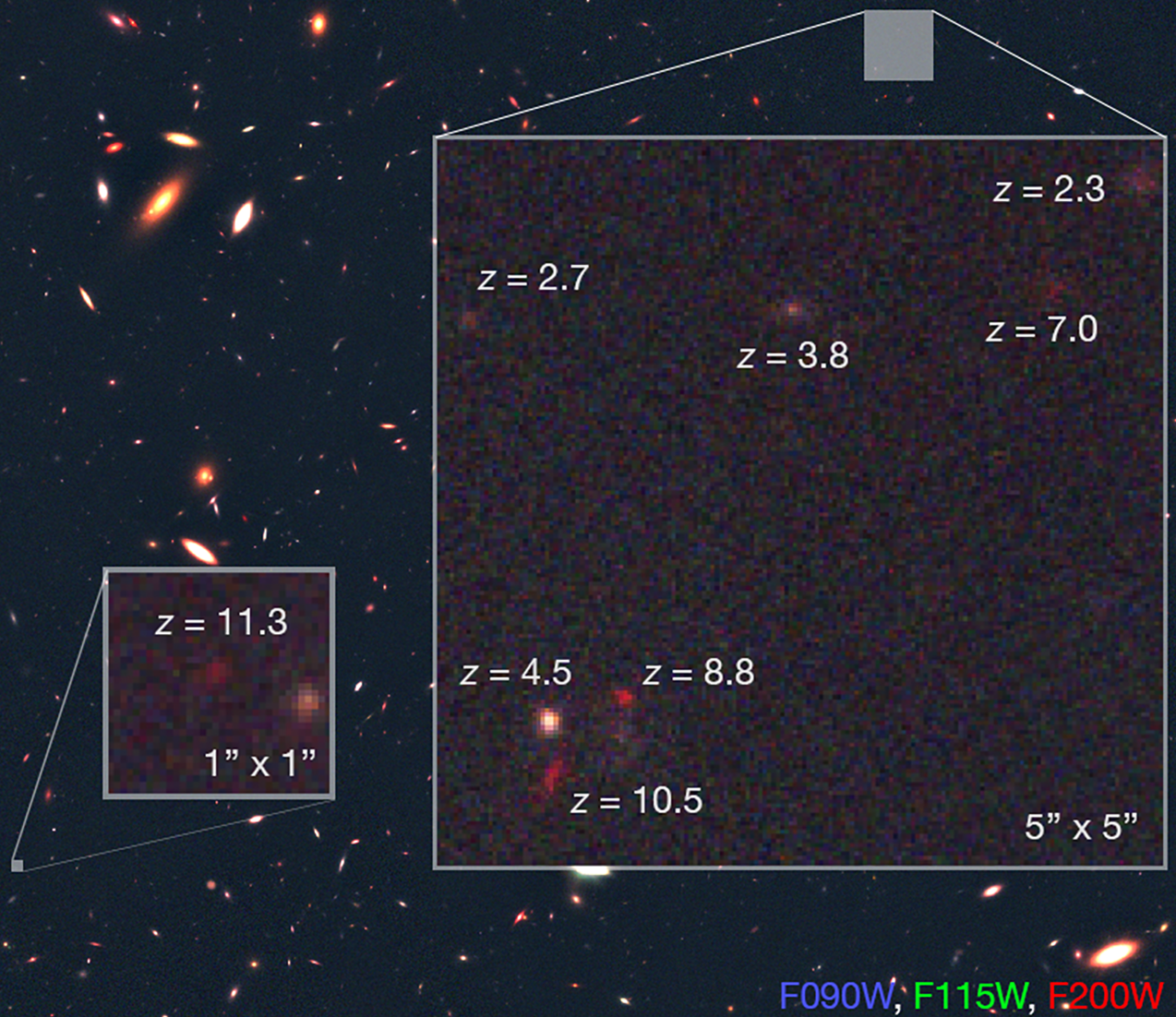In the press

Using the Atacama Large Millimeter Array (ALMA) my team and I serendipitously discovered a galaxy that is so obscured by dust, it is invisible at other wavelengths. We found it by accident in a small survey, which probably means these invisible galaxies are common, and still undiscovered in the early Universe. When James Webb Space Telescope launches, we can find them all! In the meantime they are evidence that massive galaxies grow rapidly in the early Universe.
Image credit: James Josephides (Swinburne Astronomy Productions), Christina Williams (Arizona), Ivo Labbe (Swinburne)
You can read the press releases from University of Arizona and my PhD institute UMass-Amherst. Our result sparked additional stories in CNN , Forbes , Discover and Boston Globe
Using Hubble Space Telescope, Dr. Bettina Posselt and collaborators discovered extended infrared emission coming from a pulsar. This unprecedented observation could mean there is a large dusty disk surrounding the pulsar that re-collapsed after the supernova of its progenitor star. It could alternatively be evidence of a "pulsar wind nebula" which is caused by a wind of charged particles emanating from the pulsar and interacting with the interstellar medium, however pulsar wind nebulae have never before been seen in the infrared, indicating new physics we can learn. Linking the mysterious infrared emission to the pulsar required very careful rejection of other possible hypotheses, such as a background high-redshift galaxy along the line of sight to the pulsar.
You can read the press releases from Penn State University and the NASA press office.
Using the CANDELS survey with Hubble Space Telescope, my colleages and I, lead by Dr. Bomee Lee at Caltech, made the remarkable discovery that even 11 billion years ago, so soon after galaxies started forming, the diversity of morphologies in galaxies already exists (known as the Hubble Sequence in the nearby Universe).
You can read the press releases from Space.com and the European Space Agency press office.
Things you can download

The launch of JWST might be delayed until 2021, but that shouldn't stop you from exploring what real JWST data will look like! At this link you can find simulated JWST images that incorporate real engineering data from the real NIRCam detectors, and simulate the ultra-deep extragalactic field (GOODS-South) that we will see in Cycle 1. JAGUAR simulated images and catalogs of JWST extragalactic surveys
Figure: Williams et al. 2018Past Research
-
ARCTIC SEA ICE
In collaboration with the Sea Ice group at the Geophysical Institute of the University of Alaska (lead by Dr. Hajo Eicken) I helped to develop a real-time sea ice montioring system in, also known as sea ice observatories, on the Arctic coast of Alaska. These monitoring systems are important because warming due to climate change occurs more rapidly in Arctic regions and results in the coastal, grounded (landfast) sea ice becoming less predictable. The landfast ice is a critical part of the coastal ecosystem and the subsistence resources for Native Alaskans, and unstable ice conditions put hunters and fishers in danger. The ice observatory helps assess the coastal ice conditions in real-time. Details of the ice observatory can be found in Druckenmiller et al, 2009. See real-time radar and images of current ice conditions off the Arctic coast of Alaska at the following links:
Barrow Sea Ice Observatory
Wales Sea Ice Observatory
ARCTIC TECTONICS
For my masters thesis at University of Alaska with Dr. Bernard Coakley, I studied the tectonic history of the Arctic Ocean, one of the most enigmatic and poorly understood ocean basins on the planet due to its remoteness and ice cover. I used gravity and bathymetry data collected from submarine transets under the Arctic sea ice to better understand how the Arctic basin formed.
Arctic Ocean Bathmetry
Scientific Ice EXpeditions
THE MARTIAN ICE CAP
As an undergrad, I was a Research Experience for Undergraduates (REU) researcher in planetary geophysics at the University of Alaska. I used numerical calculations with Dr. John Chappelow to study the latitudinal extent of the carbon dioxide ice cap on Mars, and how this has changed over Mars's history due to changes in its orbit (in particular the obliquity).
UAF Planetary Science
NEARBY STARS AND BROWN DWARFS
As an undergraduate at Johns Hopkins working with Drs. David Golimowski and Todd Henry, I made imaging and spectroscopic observations at Apache Point Observatory as part of the nearby and low-mass stars group. I worked to spectroscopically characterize L and T type dwarfs and candidate brown dwarfs. More info on the Research Consortium on Nearby Stars and our findings about dwarf stars can be found here: Knapp et al., 2004.